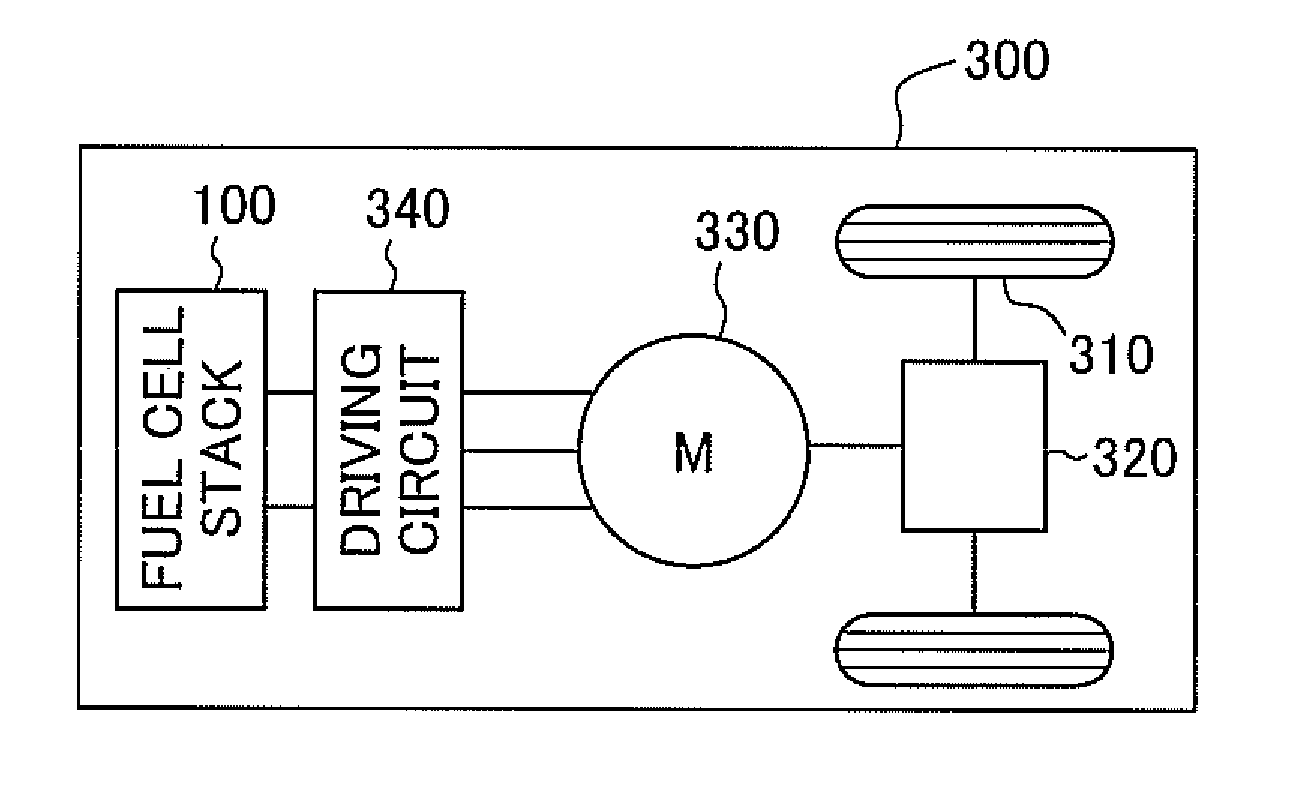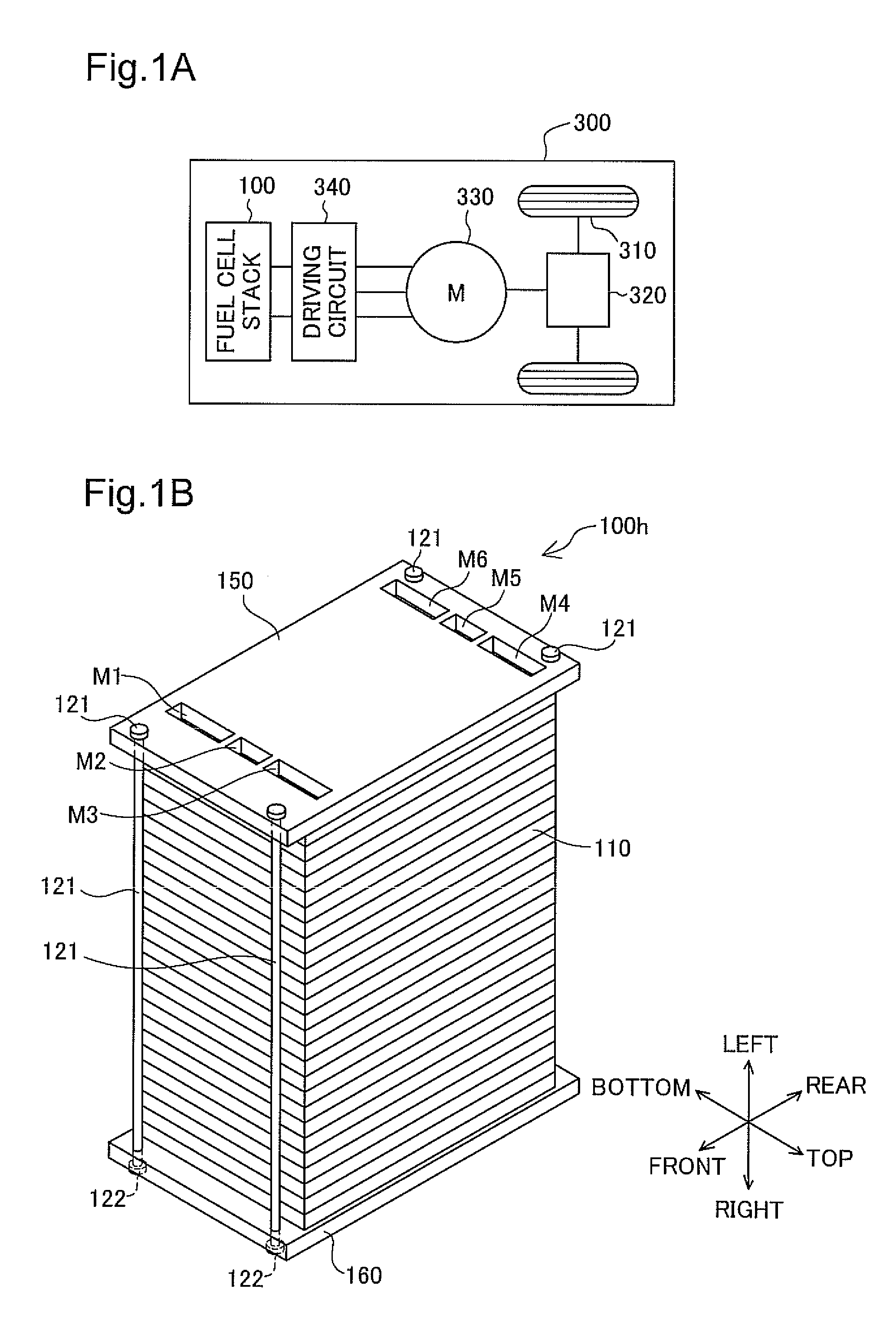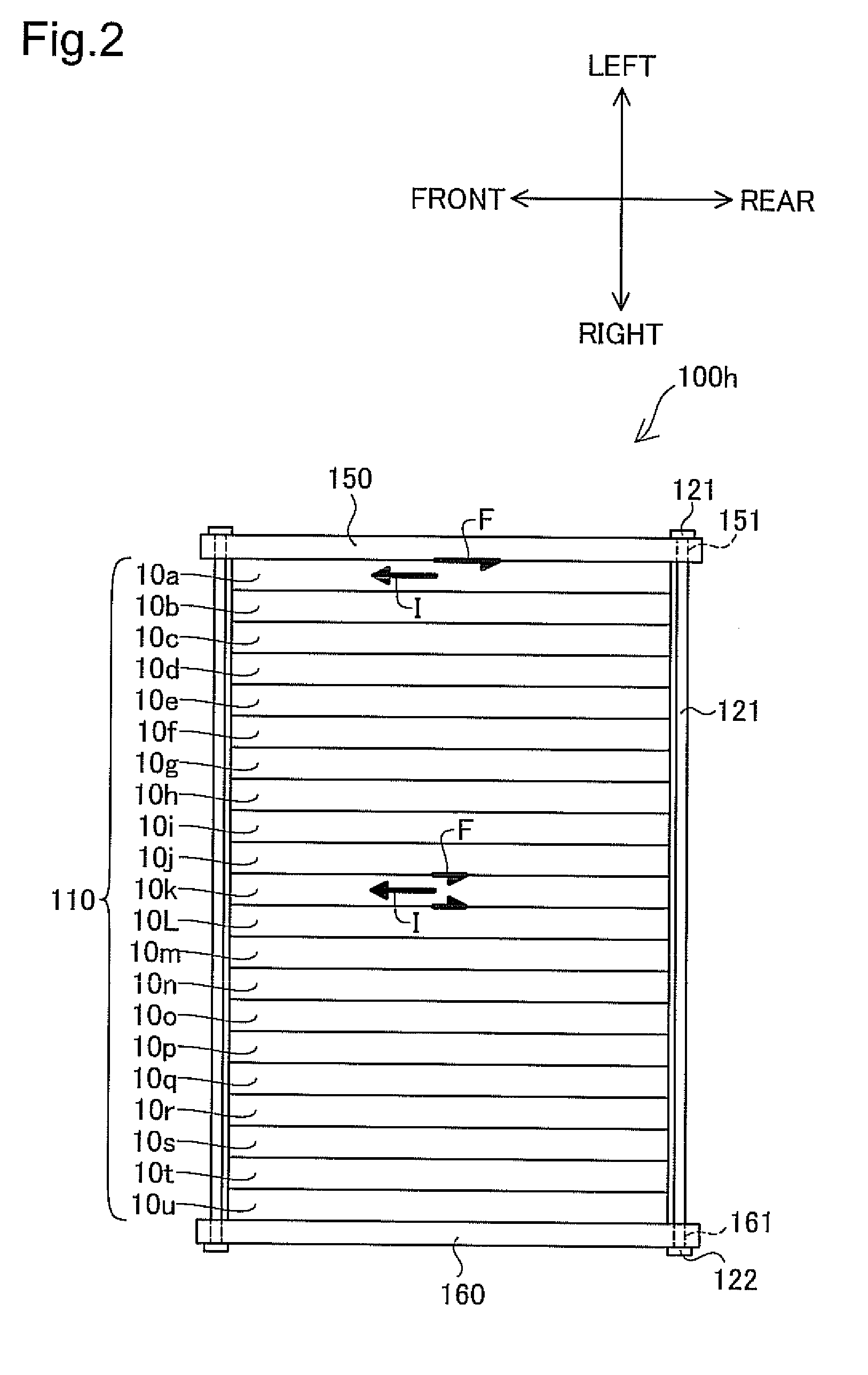Fuel cell stack and vehicle equipped with fuel cell system
a fuel cell and stack technology, applied in the field of fuel cell stacks, can solve the problems of increasing weight, increasing rigidity, and concentrating inertial load in the mated region, and achieve the effects of increasing the rigidity enhancing the assembling property and reusability, and effectively increasing the biasing force of the displacement preventing member
- Summary
- Abstract
- Description
- Claims
- Application Information
AI Technical Summary
Benefits of technology
Problems solved by technology
Method used
Image
Examples
first embodiment
A. Structure of Fuel Cell Stack in First Embodiment of the Invention
[0024]FIG. 1A is an explanatory view illustrating the configuration of a vehicle equipped with a fuel cell stack in one embodiment of the invention. As illustrated, a vehicle 300 includes a fuel cell stack 100, a motor 330 as a drive source of the vehicle 300, and a driving circuit 340 configured to consume electric power supplied from the fuel cell stack 100 and drive the motor 330. The power generated by the motor 330 is transmitted via a gear box 320 to a pair of drive wheels 310. The motor 330 is a three-phase motor with permanent magnets. The driving circuit 340 uses switching elements (not shown) to convert the direct-current power obtained from the fuel cell stack 100 into three-phase alternating-current driving power and supplies the three-phase alternating-current driving power to the motor 330.
[0025]The fuel cell stack 100 is described below. FIG. 1B is an explanatory view showing the fuel cell stack 100 o...
second embodiment
B. Structure of Fuel Cell Stack in Second Embodiment of the Invention
[0040]FIG. 5 is an exploded view illustrating a fuel cell stack 100a in a second embodiment of the invention. The difference of the fuel cell stack 100a of the second embodiment from the fuel cell stack 100 of the first embodiment is that four studs 121a given as fastener members for fastening end plates 150a and 160a located across a cell laminate 110a are joined and structurally integrated with displacement preventing members 200a (discussed later). For the clarity of explanation, the displacement preventing members 200a are omitted from the illustration of FIG. 5. The coordinate system of FIG. 5 defines directions of the fuel cell stack 100a mounted in a certain orientation on a vehicle (not shown).
[0041]The end plates 150a and 160a are located on both ends of the cell laminate 110a in its stacking direction and fastened to the cell laminate 110a with the four studs 121a and eight bolts 122a. The motions of the ...
PUM
 Login to View More
Login to View More Abstract
Description
Claims
Application Information
 Login to View More
Login to View More - R&D
- Intellectual Property
- Life Sciences
- Materials
- Tech Scout
- Unparalleled Data Quality
- Higher Quality Content
- 60% Fewer Hallucinations
Browse by: Latest US Patents, China's latest patents, Technical Efficacy Thesaurus, Application Domain, Technology Topic, Popular Technical Reports.
© 2025 PatSnap. All rights reserved.Legal|Privacy policy|Modern Slavery Act Transparency Statement|Sitemap|About US| Contact US: help@patsnap.com



